
Jena 1748
Caroline and Wilhelm Schlegel moved here in July 1796, and it was here, peaking during the brief period 1799–1800, that the early Romantics were assembled in what might be understood more narrowly as a genuine “circle.”
Caroline will speak of the mountainous surroundings of Jena in the connection with the following image.
(Copper engraving by Johannes Christian Mueller Roehr [1748].)
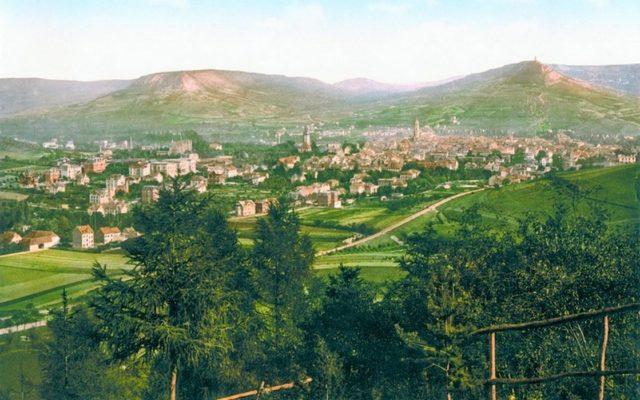
Jena, ca. 1900
Jena ca. 1900. Caroline writes a few days after her arrival in July 1796:
“The fresh air dispelled my headache. Schlegel was afraid the rock cliffs at the entrance to the town might frighten me off. But I only paid attention to what is good and pleasant about the place and have already become quite good friends with this romantic valley.”
(Library of Congress Prints and Photographs Division Washington, D.C.)
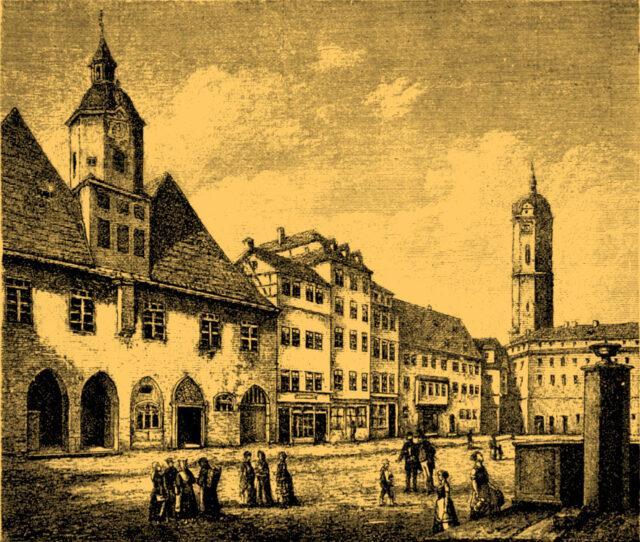
Jena: Market Square
The Market Square in Jena essentially as Caroline would have experienced it. The town hall is on the left, the municipal church at right in the background. Caroline’s residence at Leutragasse 5 is down the street to the left (not pictured) from the front of the church.
(Illustration: Die Burschenschaft Germania zu Jena [Jena 1897], 87.)

Leutragasse 5 in Jena (1909)
Map of Jena in 1909: Caroline’s residence in the right rear edifice at Leutragasse 5 (the number 5 was assigned in 1887). The house was built in the late 17th century and was the central gathering place for the Jena circle.
(Stadtplan von Jena, 1909; Städtische Museen Jena: Stadtmuseum und Kunstsammlung.)
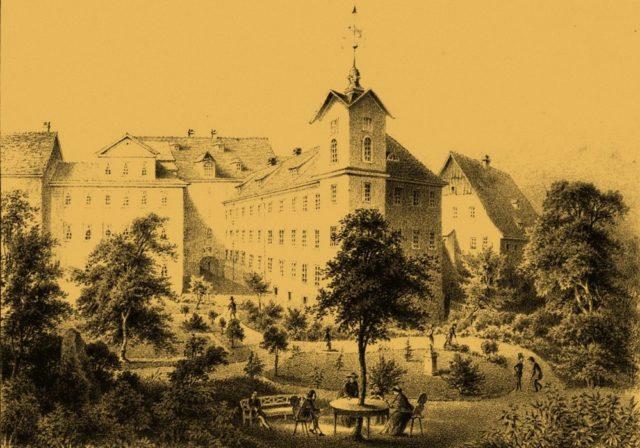
Leutragasse 5, rear view
Leutragasse 5 in Jena. In October 1796, Caroline, Wilhelm, Auguste, and possibly also Friedrich Schlegel likely moved into the right rear wing of this building at Leutragasse 5 in Jena. After Friedrich returned from Berlin with Dorothea Veit in the autumn of 1799, Dorothea describes their residence as a “beautiful apartment…each person has his own, small, nicely furnished quarters in the same house; we are each of us alone, or we visit one another.” She continues:
“We live in a kind of rear edifice, all the windows look out onto the courtyard. I myself live downstairs, one flight up Caroline, then Wilhelm, and finally, in the uppermost story, Friedrich.”
(Frontispiece to Dr. Eduard Helmke, Bericht über die Orthopaedisch-gymnastische Heilanstalt in Jena [Leipzig 1863].)

Courtyard of Caroline’s Residence in Jena
Courtyard of Caroline’s Residence in Jena at Leutragrasse 5. This arched portal from Leutragasse can be seen in the earlier rear view of the house. Four of what were likely Caroline’s five first-floor apartment windows (the first is hidden) are visible immediately to the left, just beyond the passageway.
(Postcard, undated photo, editor’s private collection.)
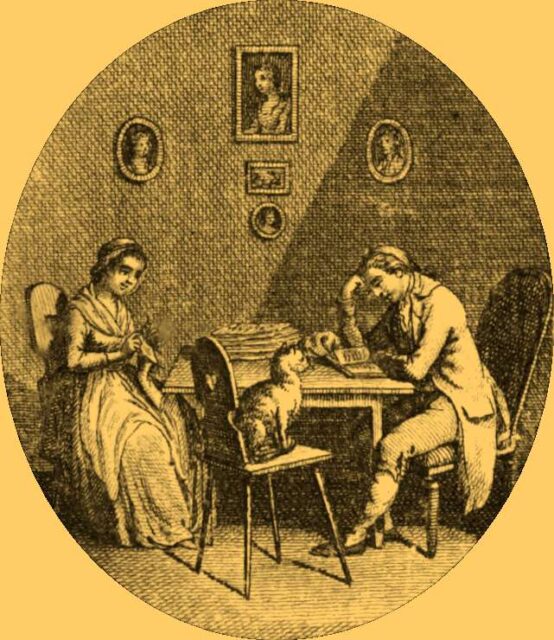
Caroline and Wilhelm lived together in Jena from July 1796 until May 1800.
(Illustration: frontispiece to Gotthelf Wilhelm Christoph Starke, Gemählde aus dem häuslichen Leben und Erzählungen, vol. 3 [Berlin 1801].)

Christoph Martin Wieland
Christoph Martin Wieland, with whose work
“We went there for tea, to which Wieland had also been summoned and whom I allegedly encountered in an extraordinarily good mood, and indeed, he came up with some very funny remarks, grumbling on about, among other things, pigs, for whose creation he simply could never forgive our dear Lord — and which in a fit of severe displeasure he called anti-graces.”
(Portrait: 1805, by Ferdinand Carl Christian Jagemann.)
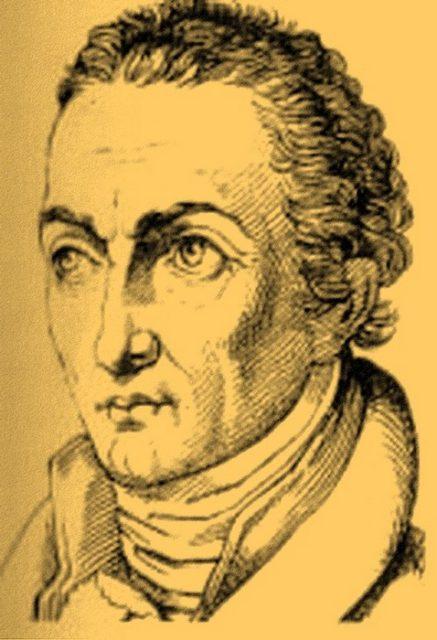
Heinrich Eberhard Gottlob Paulus
Professor Paulus and his wife were initially close social acquaintance of the Schlegel’s in Jena and even regular midday meal guests. The good relationship did not last, however, and Paulus was later Schelling’s colleague and nemesis in Würzburg. Both Friedrich and Wilhelm Schlegel seem to have engaged in some serious flirtation with his wife, Karoline (described as “not exactly inaccessible”), and Caroline maliciously wonders whether the Pauluses’ son, Wilhelm, born in 1802, had an apostle (Paulus himself) as his father, or an evangelist (A. F. Marcus, a physician in Bamberg), with the latter of whom she suspected Karoline Paulus of having had an affair. Wilhelm Schlegel married the Pauluses’ daughter, Sophie, in 1818 but never lived with her.
(Drawing by unknown artist.)

Gottlieb Hufeland
Gottlieb Hufeland, one of the editors of the Allgemeine Literatur-Zeitung, with which the Jena circle eventually had irreconcilable and in part quite bitter differences. Initially the two families were good neighbors at Leutragasse 5. Caroline Tischbein writes in her memoirs:
“The law professor Hufeland lived just across from them [Caroline and Wilhelm] — I believe their houses, separated by a courtyard, belonged together.”
(Portrait by Johann Friedrich August Tischbein.)
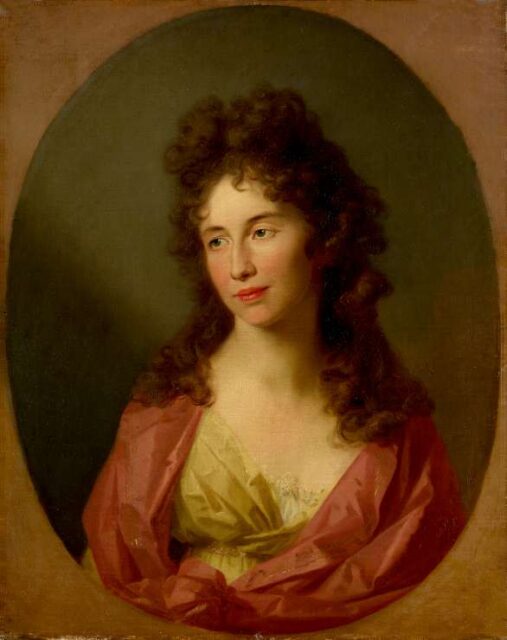
Konradine Luise Hufeland
Konradine Luise Hufeland, née Wiedemann, wife of Gottlieb Hufeland (co-editor of the Allgemeine Literatur-Zeitung), but also sister-in-law of Caroline’s sister Luise. The Hufelands lived across the courtyard from the Schlegels at Leutragasse 5. Caroline Tischbein continues in her memoirs:
“Madam Hufeland was an extremely elegant, vivacious woman and, like her husband, close friends with the Schlegels.”
(Portrait: 1798, by Johann Friedrich August Tischbein.)

Friedrich Schiller
Relations were initially quite cordial with Schiller. Caroline writes in July 1796:
“Göthe fastened the final part of Wilhelm Meister behind him on his horse…brought the manuscript over here, and Schiller said yesterday that in the next few days he would invite us to a reading of it….It made me very glad indeed to see Göthe again [Caroline had met him in Mainz], and to find him so gracious and charming at that.”
(Portrait: frontispiece to Otto Günther, Friedrich Schiller: Sein Leben und seine Dichtungen [Leipzig 1925].)

Charlotte Schiller
Charlotte Schiller, too, was initially cordial to the Schlegels. Caroline writes in July 1796:
“Madam Schiller managed to get me a maidservant from Rudolstadt who was already here and who to this point seems extraordinarily accommodating and can also cook.”
Nonetheless, letters written to Charlotte Schiller later are a source of some of the most critical and malicious remarks directed against Caroline.
(Portrait: Gustav Könnecke, Bilderatlas zur Geschichte der deutschen Nationallitteratur, 2nd ed. [Marburg 1895], 310.)

Johann Friedrich Reichardt
Johann Friedrich Reichardt, composer and journalist, writes to Wilhelm Schlegel in 1796:
“We are both delighted to know that you, my valued, dear friend, are now in the womb of domestic bliss and that the addition of your excellent brother has rounded out the sacred number so nicely for you. Please do favor us quite soon by acquainting us with your charming wife so that this beautiful picture of harmonious love, friendship, and brotherly love may become wholly concrete for us.”
(Portrait: engraving after Anton Graff.)
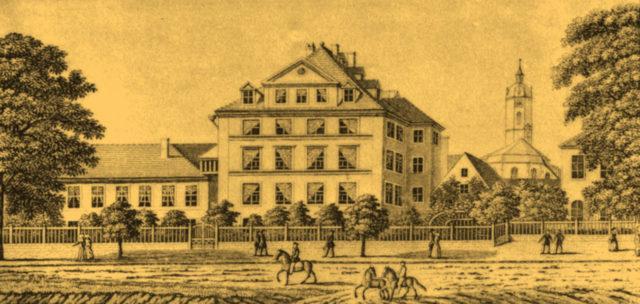
Griesbach House in Jena
The house of the theologian Johann Jakob Griesbach, where Schiller lived 13 April 1795—3 Dezember 1799. Caroline writes in July 1796, just after arriving in Jena:
“We went to see the Schillers after our meal the day before yesterday, since it was no longer possible that same evening. Everything was just as I had imagined it would be — except that I found Schiller to be more handsome, and his little boy is marvelous. We were on our way to see them when someone met us with the news that she had just given birth to a second little boy fifteen minutes earlier.”
(Hermann Schulze, Friedrich Gottlob Schulze-Gävernitz: ein Lebensbild gezeichnet und als Festgabe dargebracht zur Enthüllungsfeier des Schulze-Denkamals in Jena am 10. August 1867, [Breslau 1867], plate following p. 68.)
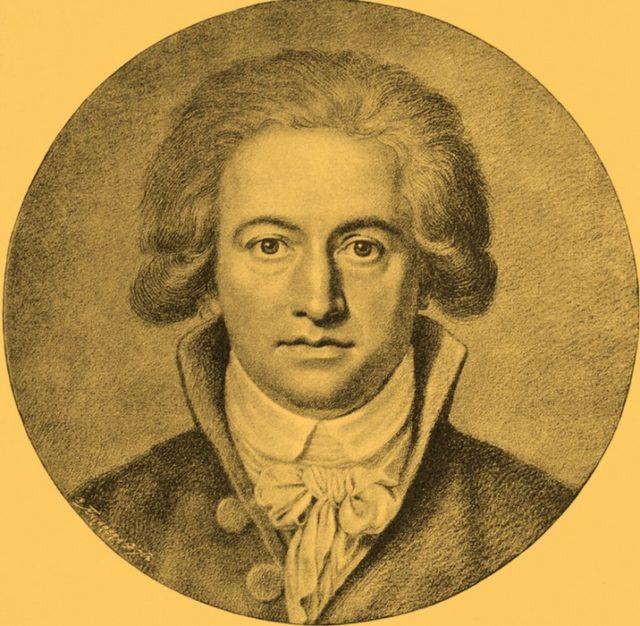
Goethe
A close acquaintance of the Romantic circle in Jena, Goethe regularly appears in Caroline’s own letters and life from an extremely early period — when she swoons in anguish at having missed his visit in Göttingen — to his cordial visits in Jena, his friendship with Schelling, and his mediation in helping Caroline and Wilhelm secure a divorce, to mention but a few examples.
(Portrait: 1791 by Johann Hieronymus Lips; in Gustav Könnecke, Bilderatlas zur Geschichte der deutschen Nationallitteratur, 2nd ed. [Marburg 1895], 286.)
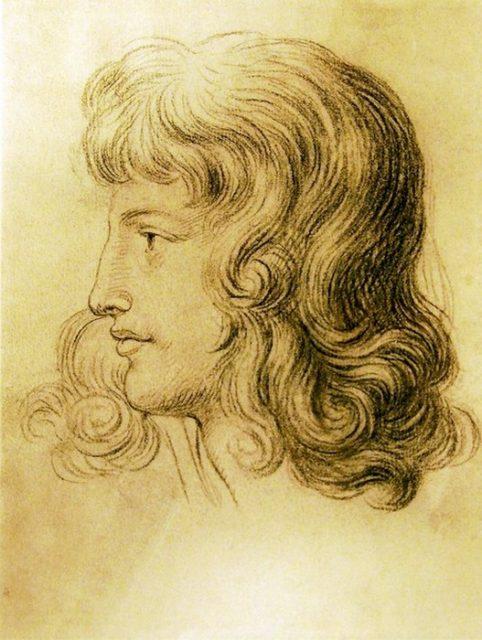
Christiane Vulpius
Christiane Vulpius: Goethe’s mistress, whom he married in 1806. The Weimar court circles and society initially were cool toward her as a commoner, and Caroline herself will later have some unkind remarks for her. Johanna Schopenhauer helped break her social isolation later by inviting her to tea at Goethe’s request.
(Portrait: by Goethe, ca. 1788/89; Goethe-Museum Frankfurt a.M.)

Johann Gottfried Herder
One of the most significant literary figures in Weimar during this period, and an early friend of Goethe. Caroline will give a delightful account of afternoon tea at his house, writing:
“But the person who absolutely charmed me and almost made me fall in love that would be Herder…His Courland accent is already enough to steal your heart, and then the simultaneous ease and dignity in his whole being, the witty grace in everything he says — and he says not a word that one is not glad to hear.”
She will be less eager to face him and the consistory later in connection with her and Wilhelm Schlegel’s divorce petition.
(Portrait by Anton Graff.)

Friedrich Immanuel Niethammer
Jena professor and a Swabian countryman of Schelling. After initially living in provisional quarters in a garden house somewhere between the Löbder Gate and the Paradise greenspace, in October 1796 the Schlegels moved into the rear part of a house he owned (through marriage) in Jena, on Leutragasse. He would later be Schelling’s colleague and neighbor in Würzburg as well.
(Portrait: by unknown artist; Bayerische Akademie der Wissenschaften.)
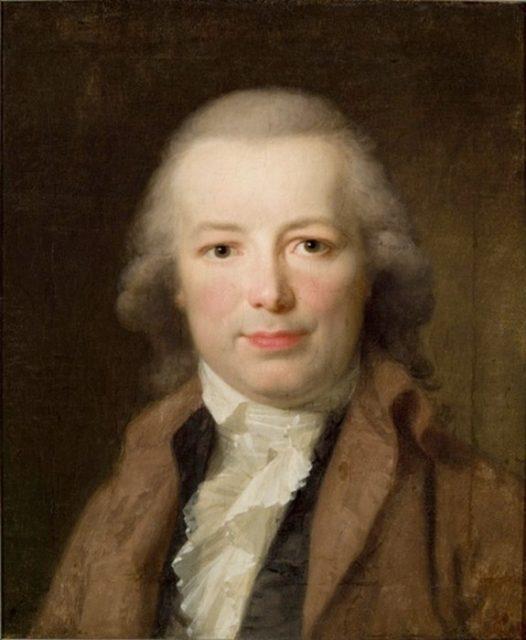
Karl August Böttiger
This Weimar literary figure writes to Wilhelm in 1797 about Caroline’s siding with Wieland in a skirmish involving Schiller and Goethe’s Xenien satire:
“I could not bring myself to deprive our good Father Wieland of the pleasure your spouse’s approval could not but give him. I related to him yesterday what you had remarked to me concerning his reviews of the Musenalmanach, and he said that the nod of
That Wilhelm would later plan an “annihilation of Wieland” in the periodical Athenaeum, and that Goethe would later repress his critical review of Wilhelm’s play Ion, will please him less.
(1795 portrait by Johann Friedrich August Tischbein.)
